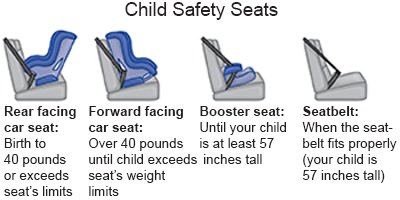Growth and Development of Premature Babies
Medically reviewed by Drugs.com. Last updated on Aug 4, 2025.
What is the growth and development of premature babies?
Growth and development is how your premature baby learns, interacts, expresses himself or herself, and physically grows. The later the birth of your baby, the lower his or her risk for health and development problems.
What long-term problems is my baby at risk for?
Your baby may be at risk for long-term problems due to an immature brain and nervous system. Early intervention programs can help your baby from birth to age 3 with developmental delays or disabilities. Ask your newborn's healthcare provider for more information about early intervention programs. Your baby may be at risk for any of the following:
- Problems with motor development include holding his or her head up, crawling, and walking. Your child may also have trouble caring for himself or herself. He or she may not be able to feed and dress himself or herself at the age that he or she should. He or she may need physical or occupational therapy to help manage these problems.
- Problems with cognitive development include trouble learning, understanding, and paying attention. Your child may also have difficulty speaking and communicating with others. He or she may need education or speech therapy to help him or her manage these problems.
- Behavior problems include aggression, anxiety, or problems with social skills. Your child may need counseling or other support to help him or her manage these problems.
- Medical conditions include asthma, seizures, cerebral palsy, or autism. These may affect your baby for the rest of his or her life.
What are some growth and development milestones my baby may reach in the first year?
Calculate your baby's true age to decide if he or she has reached milestones. For example, if your baby is 10 weeks old, but was born 6 weeks early, subtract 6 from 10. Your baby's true age is 4 weeks old. Premature babies may take longer to reach milestones than babies who are born on time. The following is an overview of milestones to look for:
- At 2 months (4 weeks), your baby can lift his or her head with support. He or she can move his or her arms and legs, and hold objects in his or her hands. He or she can turn his or her head to noises and make cooing or babbling sounds. He or she can follow moving objects with his or her eyes, and smile. He or she recognizes his or her mother or primary caregiver.
- At 4 months (16 weeks), your baby can reach for objects and make crawling motions when on his or her tummy. Your child can pull his or her hands to his or her mouth, laugh, and begin to interact more with parents and others.
- At 6 months (24 weeks), your baby can sit up on his or her own. He or she can roll over from tummy to back. He or she can put weight on his or her feet when held in a standing position. He or she shakes objects, responds to his or her name, and reacts differently to strangers than to his or her parents. He or she may start to make more sounds, and can express happiness or unhappiness.
- At 9 months (32 weeks), your baby can pull himself or herself up to standing, crawl, and walk when his or her hands are held. He or she can imitate sounds and say simple words like mama, or dada. He or she can pick up and hold objects, such as a bottle.
- At 12 months (40 weeks), your baby can stand alone and may begin taking steps. He or she may start to use more words and combine movements with sounds. He or she helps with getting dressed and plays with other children.
How can I care for my premature newborn?
- Always place your newborn on his or her back to sleep. Swaddle him or her in a blanket. Keep the room quiet and warm. Keep the lights dim.

- Hold your newborn's head so that it is higher than his or her stomach when you feed him or her. Look for skin color changes when he or she eats. Stop from time to time to allow him or her to take enough breaths between sucks. Your newborn may tire easily when feeding. Stop the feeding if he or she looks tired.
- Do not use a microwave to heat your newborn's bottle. The milk or formula will not heat evenly and will have spots that are very hot. Your newborn's face or mouth could be burned. You can warm the milk or formula quickly by placing the bottle in a pot of warm water for a few minutes.
- Follow up with your newborn's healthcare provider as directed. Regular medical checkups and vaccinations are necessary. Your newborn may get infections easily because of his or her weak immune system. It is important to get your newborn vaccinated to protect his or her health.
- Learn your newborn's behaviors and signs. Your newborn will cry to let you know that he or she is hungry, wet, or wants your attention. You will soon be able to hear the differences in his or her crying. Set up a routine of sleeping and eating. A regular routine is important to make sure you and your newborn get enough rest and sleep. A routine also makes your newborn feel safe and learn to trust you.
- Use approved car seats or beds correctly. Use a car seat without a shield harness since the shield can be too high for small newborns. Put the car seat in the back seat of the car and face it backward. Make sure an adult stays with your newborn in the back. Ask for instructions on putting a premature newborn in a car seat or bed.

Care Agreement
You have the right to help plan your baby's care. Learn about your baby's health condition and how it may be treated. Discuss treatment options with your baby's healthcare providers to decide what care you want for your baby. The above information is an educational aid only. It is not intended as medical advice for individual conditions or treatments. Talk to your doctor, nurse or pharmacist before following any medical regimen to see if it is safe and effective for you.© Copyright Merative 2025 Information is for End User's use only and may not be sold, redistributed or otherwise used for commercial purposes.
Learn more about Growth and Development of Premature Babies
Treatment options
Care guides
Further information
Always consult your healthcare provider to ensure the information displayed on this page applies to your personal circumstances.
